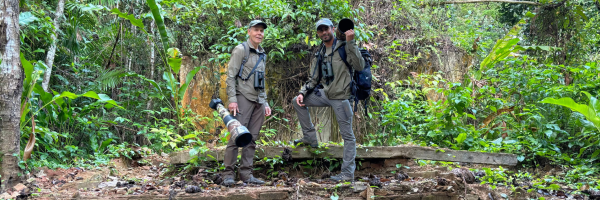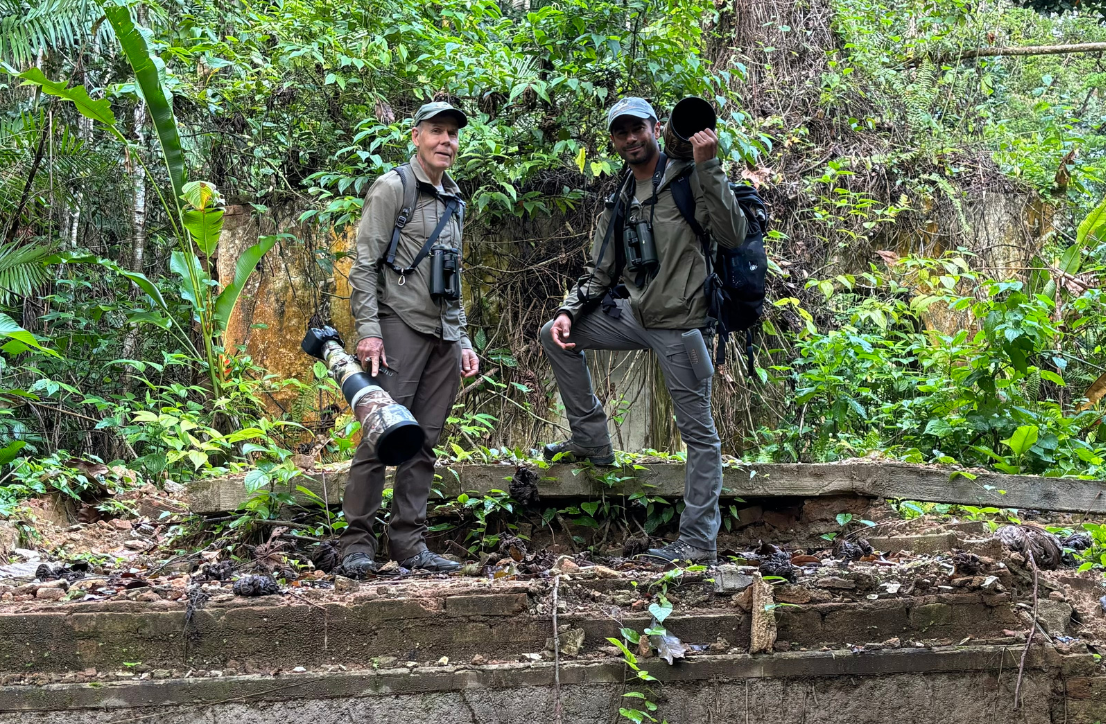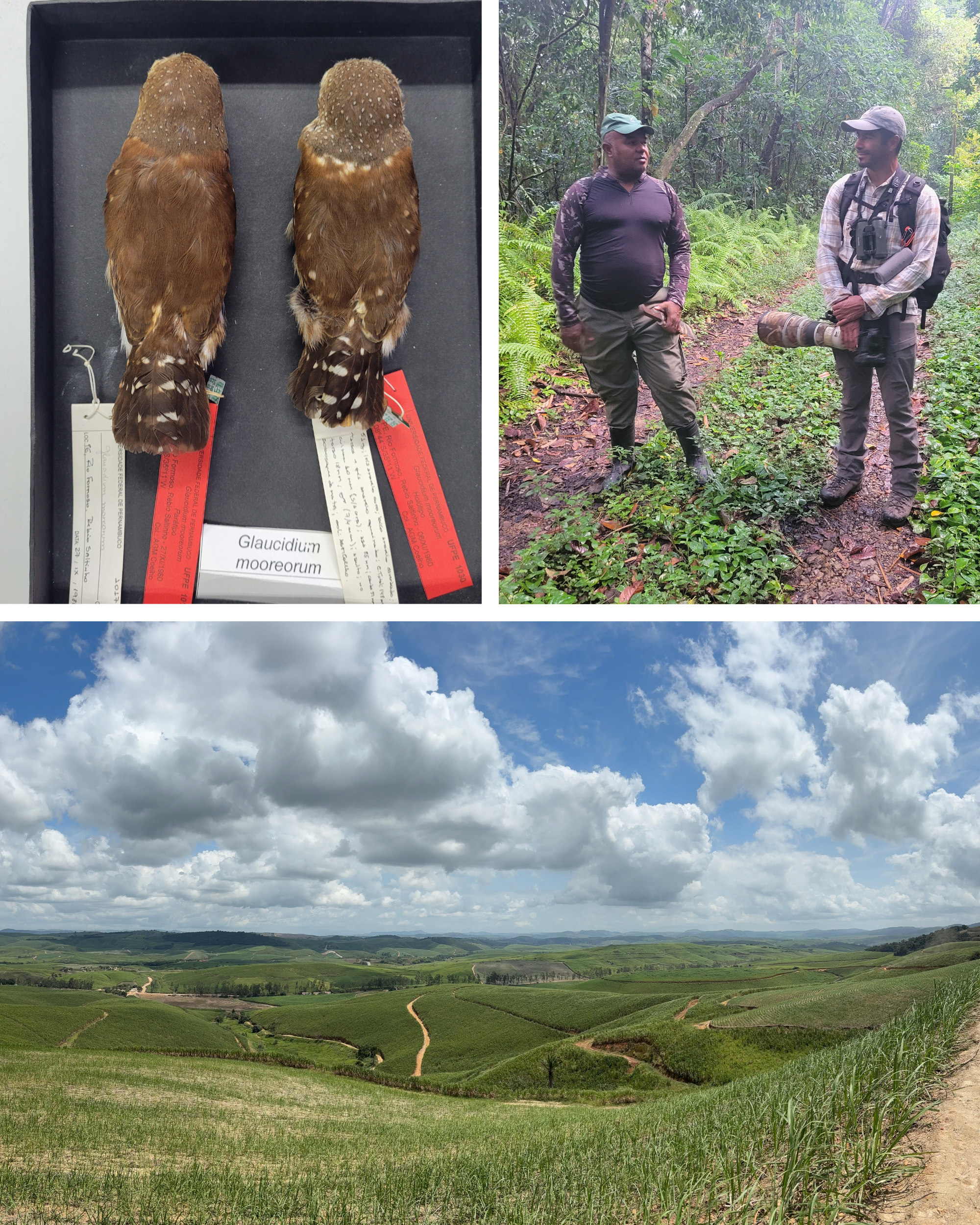Julio Gallardo
In September, Madagascar & West Indies Conservation Director Russell Thorstrom and Conservation Biologist Dr. Julio Gallardo (both pictured below) embarked on an expedition to one of the least explored corners of Brazil. Their mission? To initiate a search for one of the smallest—and one of the most Critically Endangered—raptors on Earth: the Pernambuco Pygmy-owl.
Only recognized as a distinct species in 2002, this tiny owl is known from just two museum specimens collected in 1980, an audio recording from 1990, and a single sighting in 2001. The species has not been detected since, and in 2019 it was classified as “possibly extinct” by the International Union for the Conservation of Nature (IUCN). “However, most previous search efforts have focused on just the areas where the species was previously recorded, and most surveys were conducted at night when pygmy-owls are less active,” says Julio. “We believe changes in the search methodology and expanding searches to previously non-surveyed areas could be key to finding the owl.”
Our team’s goal on this particular trip was not to search for the species but to become familiar with the area and build relationships with potential Brazilian partners to lay the groundwork for more intensive surveys in the future. “We found many forest fragments of different shapes and sizes, mainly on hilltops,” Russell describes. “However, these patches are like scattered islands surrounded by sugar cane plantations.”
The team believes this lack of connectivity is the main threat to forest-dwelling species in the area. However, they found that these fragments still hold many Atlantic Forest birds, indicating food availability for the Pernambuco Pygmy-owl. The team also found other rare, forest-dependent raptors such as the Endangered White-collared Kite and Near Threatened Mantled Hawk. “Based on these findings, we believe some of these forest fragments could sustain a small population of pygmy-owls,” Julio states.
The next step will be assembling a collaborative team of Brazilian experts, students, and field technicians, along with some of our own field biologists, to conduct intensive searches for this tiny owl. “There is hope that the Pernambuco Pygmy-owl is still present in some hidden and unexplored forest patches,” says Russell. “The Peregrine Fund is the world leader in raptor conservation, and we have the moral duty to take our 50+ years of experience and apply it to renew the hopes of finding this enigmatic and virtually unknown species.”









